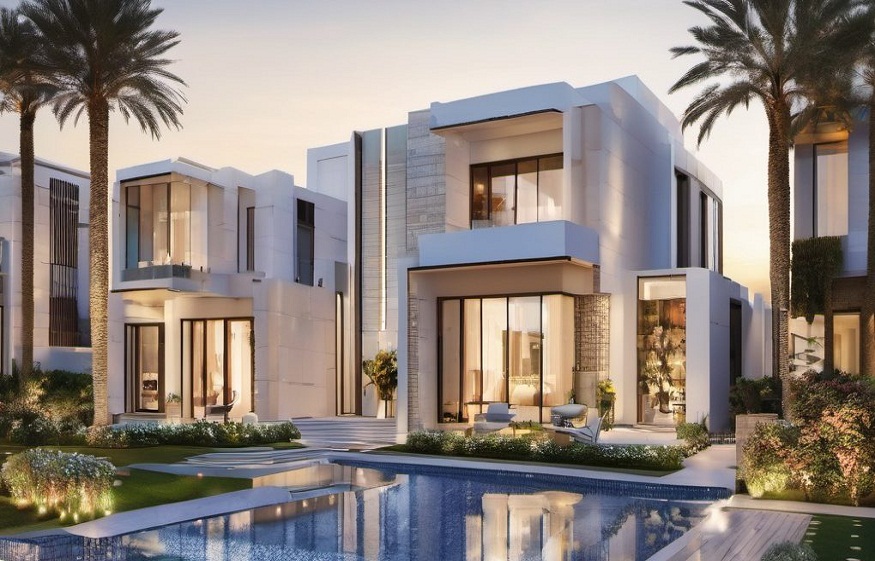Dubai is renowned worldwide as a leading tourism destination, drawing millions of visitors each year with its luxury hotels, futuristic architecture, desert adventures, and vibrant lifestyle. Tourism has long been a cornerstone of the city’s economy, but its influence extends beyond hotels and attractions. Residential communities across Dubai are also feeling the hidden impact of tourism, shaping property demand, lifestyle trends, and even neighborhood dynamics. For both residents and investors, understanding this connection is crucial to making informed decisions about where and how to live in the city.
For international investors and families, buying property in Dubai often comes with the dual benefit of enjoying a home in a cosmopolitan city while tapping into potential tourism-related opportunities. Many properties located near tourist hotspots or attractions see higher demand, not only from visitors looking for short-term rentals but also from long-term residents who want to live close to Dubai’s vibrant lifestyle hubs. This crossover between tourism and residential living means that the lines between hospitality and housing are increasingly blurred, creating both opportunities and challenges for homeowners.
Tourism Driving Demand in Key Communities
Neighborhoods such as Downtown Dubai, Palm Jumeirah, Dubai Marina, and Jumeirah Beach Residence (JBR) have become magnets for tourists, thanks to their proximity to iconic landmarks like the Burj Khalifa, The Dubai Mall, and pristine beaches. As a result, residential units in these areas often experience strong demand from both long-term tenants and short-term visitors.
This demand has a direct effect on property prices and rental yields. Communities that attract large numbers of tourists often see higher rental income opportunities, especially through platforms like Airbnb. For homeowners, this creates an attractive proposition to rent out their properties to holidaymakers, while investors can leverage tourism to maximize returns.
The Rise of Short-Term Rentals
Tourism has fueled the rapid growth of Dubai’s short-term rental market. Villas and apartments in prime communities are frequently listed for tourists seeking alternatives to traditional hotels. This trend has had two key effects: increasing rental yields for property owners and raising competition for housing in these neighborhoods.
For residents, the influx of short-term visitors can bring both positives and negatives. On the one hand, it enhances vibrancy and supports local businesses such as cafes, restaurants, and retail outlets. On the other hand, it can create concerns about noise, traffic, and a lack of long-term community cohesion in certain areas.
Infrastructure and Amenities
Tourism has also influenced the development of infrastructure and amenities within residential communities. To cater to both tourists and residents, developers have introduced world-class facilities such as waterfront promenades, entertainment hubs, fine dining, and leisure attractions within or near housing projects. This dual-purpose planning benefits residents by offering access to top-tier amenities, while also ensuring that communities remain attractive to visitors.
For example, Dubai Marina’s vibrant dining scene and JBR’s “The Walk” have transformed these residential areas into lifestyle destinations. Residents gain from easy access to amenities, while property owners benefit from increased demand driven by tourism.
Impact on Property Prices
Tourism-driven demand often leads to higher property values in key locations. While this benefits investors and homeowners looking for appreciation, it can make affordability a challenge for some residents. Families or professionals seeking more affordable housing may find themselves moving further away from tourist-heavy zones into emerging communities like Dubailand, JVC, or Dubai South.
This trend highlights how tourism indirectly shapes housing choices across the city. As prime communities become more expensive, demand shifts toward affordable areas, leading to balanced growth across Dubai’s housing market.
Cultural Exchange and Lifestyle Diversity
Tourism also adds a cultural dimension to residential living. Communities in tourism-driven areas often reflect a blend of local and international influences, creating a truly cosmopolitan environment. Residents may find themselves living alongside a diverse mix of neighbors, which enriches the social fabric of Dubai.
At the same time, the presence of tourists brings greater exposure to global trends, influencing retail offerings, dining options, and even the design of residential projects. Developers often integrate international design elements and lifestyle amenities to appeal to both residents and visiting guests.
Challenges for Residents
While tourism brings vibrancy and economic benefits, it can also create challenges for permanent residents. Increased traffic, crowded public spaces, and fluctuating rental prices are common concerns. Short-term rental activity may also reduce the sense of stability in some neighborhoods, as long-term residents seek stronger community ties.
To address these concerns, Dubai has introduced regulations to balance the needs of residents with the growing short-term rental market. Licensing systems and community guidelines aim to protect residential environments while allowing property owners to benefit from tourism demand.
Conclusion
Tourism is one of Dubai’s strongest assets, but its influence on residential communities often goes unnoticed. From driving property demand and shaping infrastructure to affecting rental yields and neighborhood dynamics, tourism has a significant impact on how people live and invest in the city.
For homeowners and investors, recognizing these hidden effects can provide an edge in decision-making. Whether through higher rental income opportunities or lifestyle advantages, communities linked to tourism often deliver added value. At the same time, residents must weigh the benefits of vibrancy against the challenges of crowding and rising costs.
Ultimately, Dubai’s ability to balance tourism with residential living ensures that its communities remain among the most attractive in the world. For anyone considering buying property in Dubai, understanding the hidden impact of tourism is key to choosing a home or investment that aligns with both lifestyle goals and long-term financial returns.





